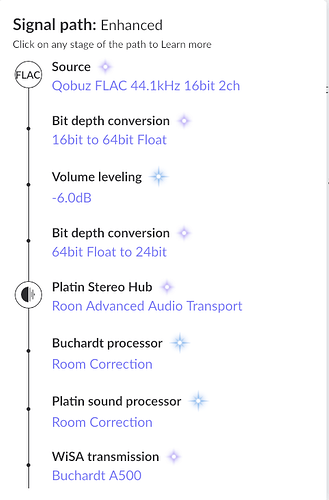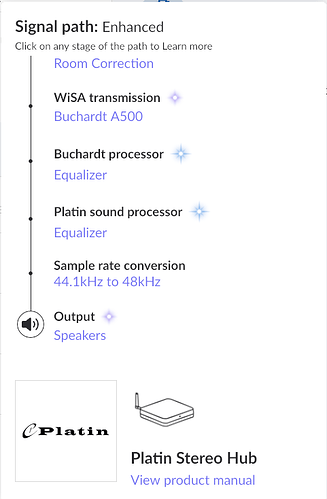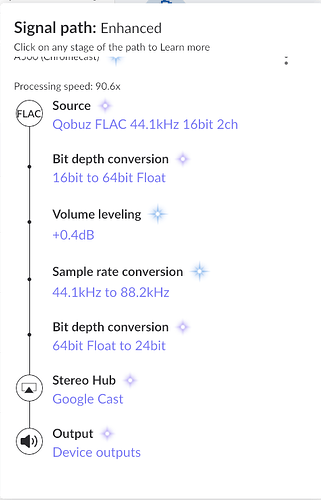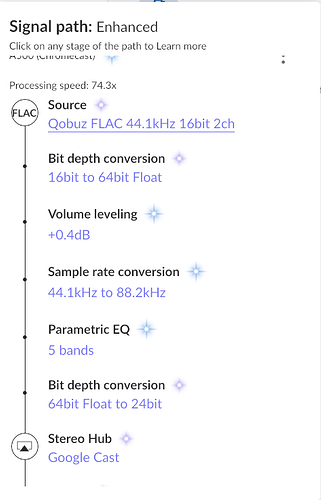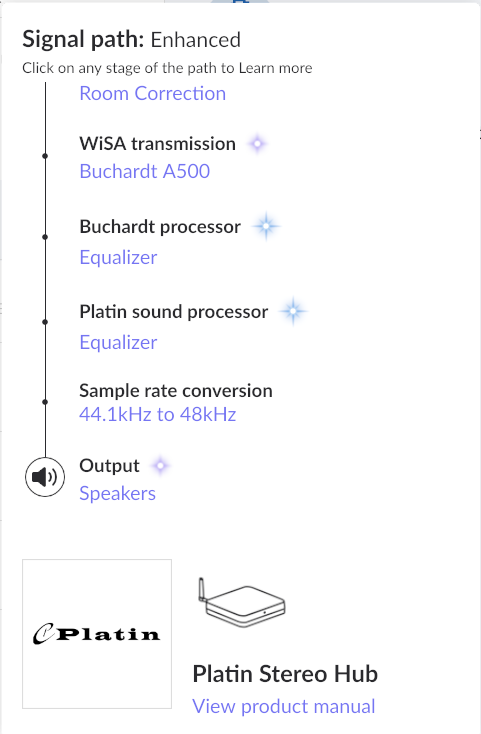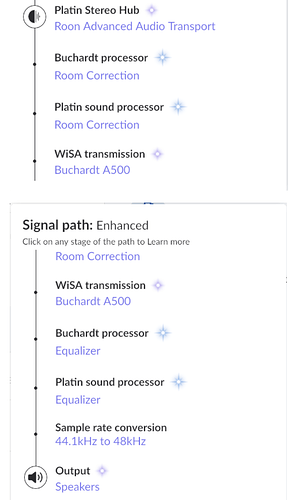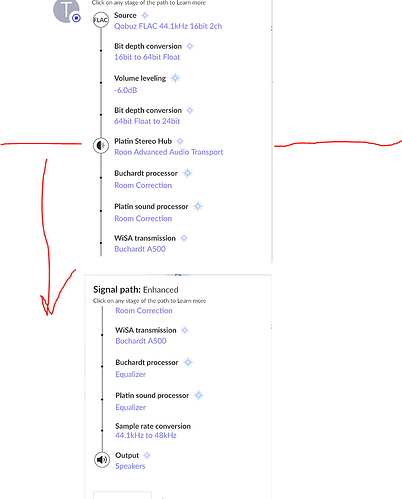The signal path shows the step by step sequence of the audio chain. Starting with Source until it gets to the device, that is Roon. Anything after that is the device telling Roon what IT is doing so that Roon can display it. Not all streaming protocols support this return information, which in that case Roon can’t display anything.
In your case, everything before the Platin Stereo Hub, is Roon, the red line drawn indicates that the stream has reached the device and directly underneath it displays the protocol used which in this case is “Roon Advanced Audio Transport” aka RAAT.
After that line, is all the processing that the Plantin Hub and Buchardt A500 are doing to the audio. Since, RAAT can send the information back to Roon, Roon can display what is going on IN that/those device(s). Not so with other protocols, but, that doesn’t mean those processing steps are not happening.
Roon RAAT is very transparent when it comes to what is happening on the device, which is usually a black box scenario (i.e. you have no idea otherwise what the device is really doing). This isn’t the time that becoming Roon Ready Certified has surprised owners with the processing steps the device is doing that RAAT has revealed (See Hegel).
However, it does look weird, the EQ and Room Correction steps, looked doubled between the Platin and the Buchardt. Correcting that, assuming that it is wrong, however, is a Platin side fix, since they are sending the information back to Roon. Roon is just displaying what it is told.
Room Correction DSP, like Dirac for example, is going to resample, 24/48 and in some cases 24/96, to do the processing.
What is your goal? Does the current setup sound bad? If not, then enjoy! and have a nice summer beverage. 
